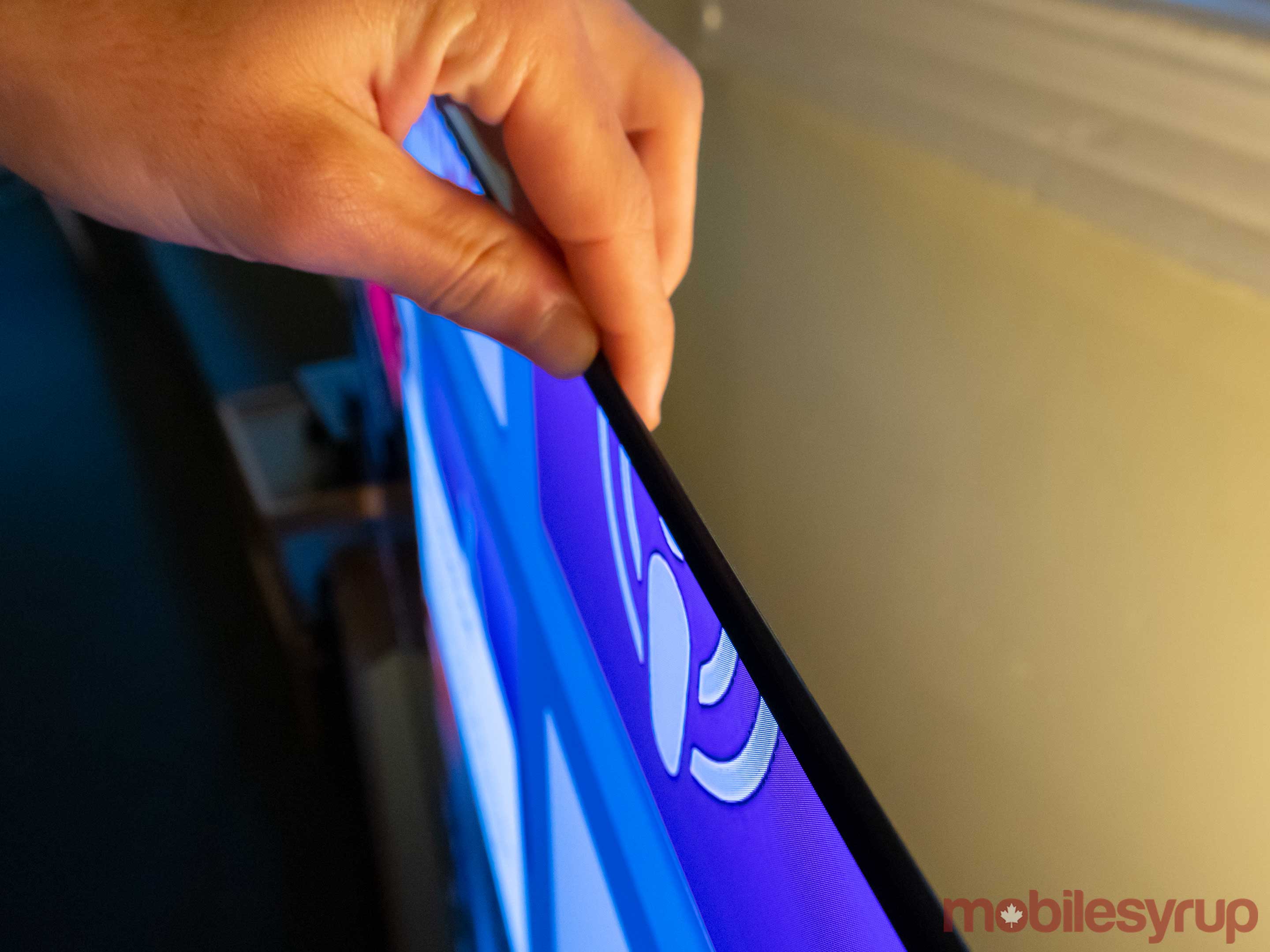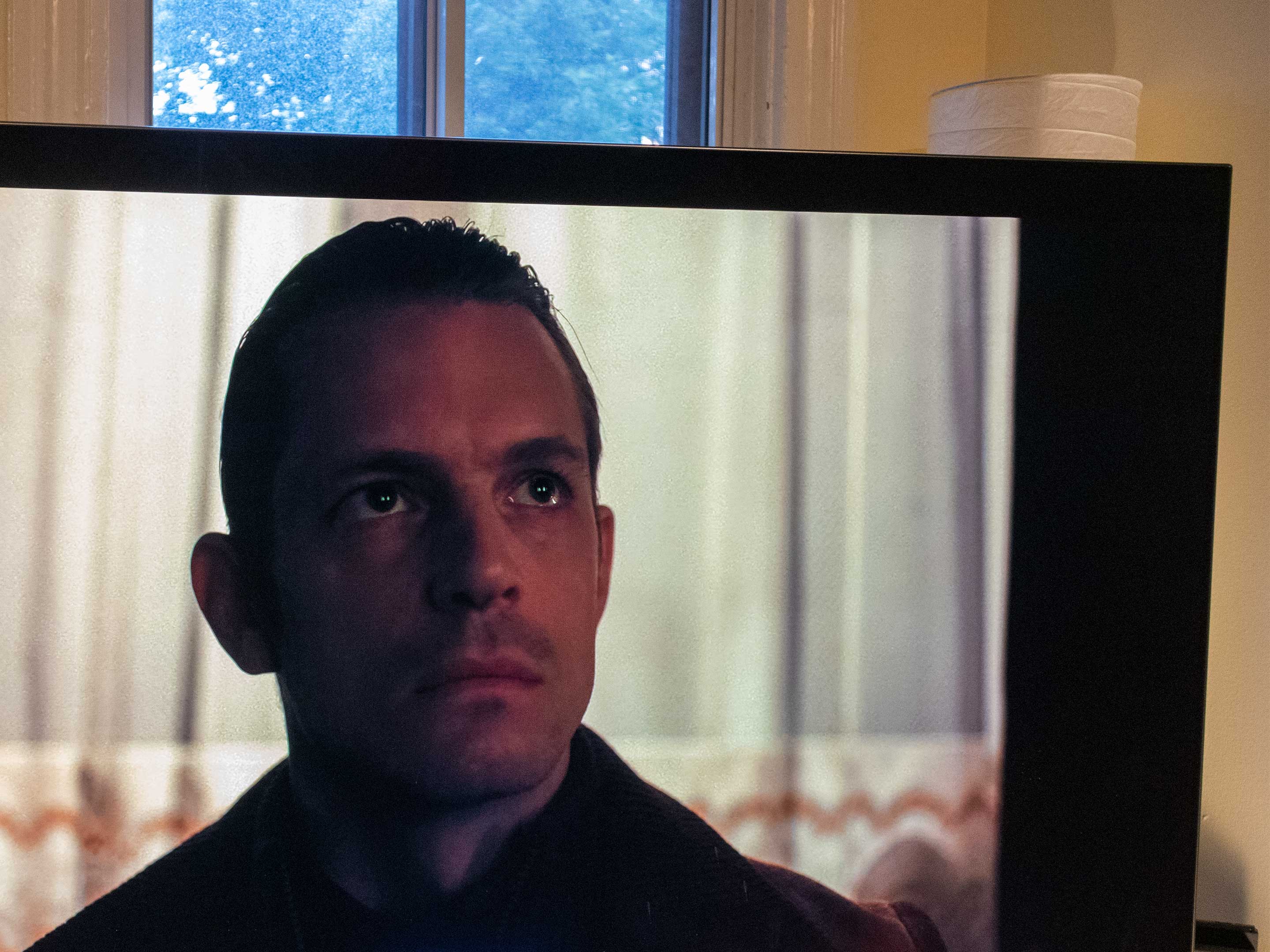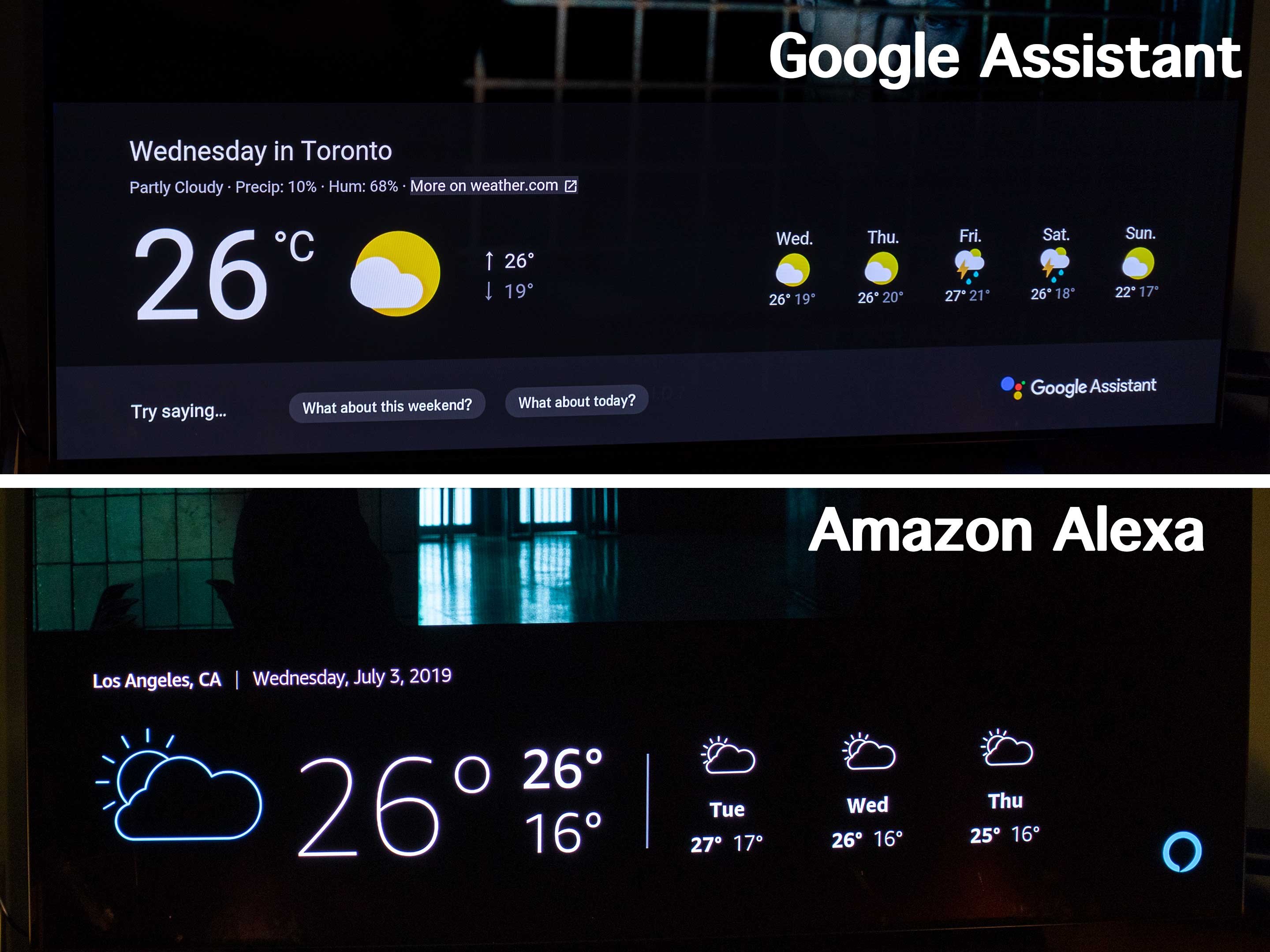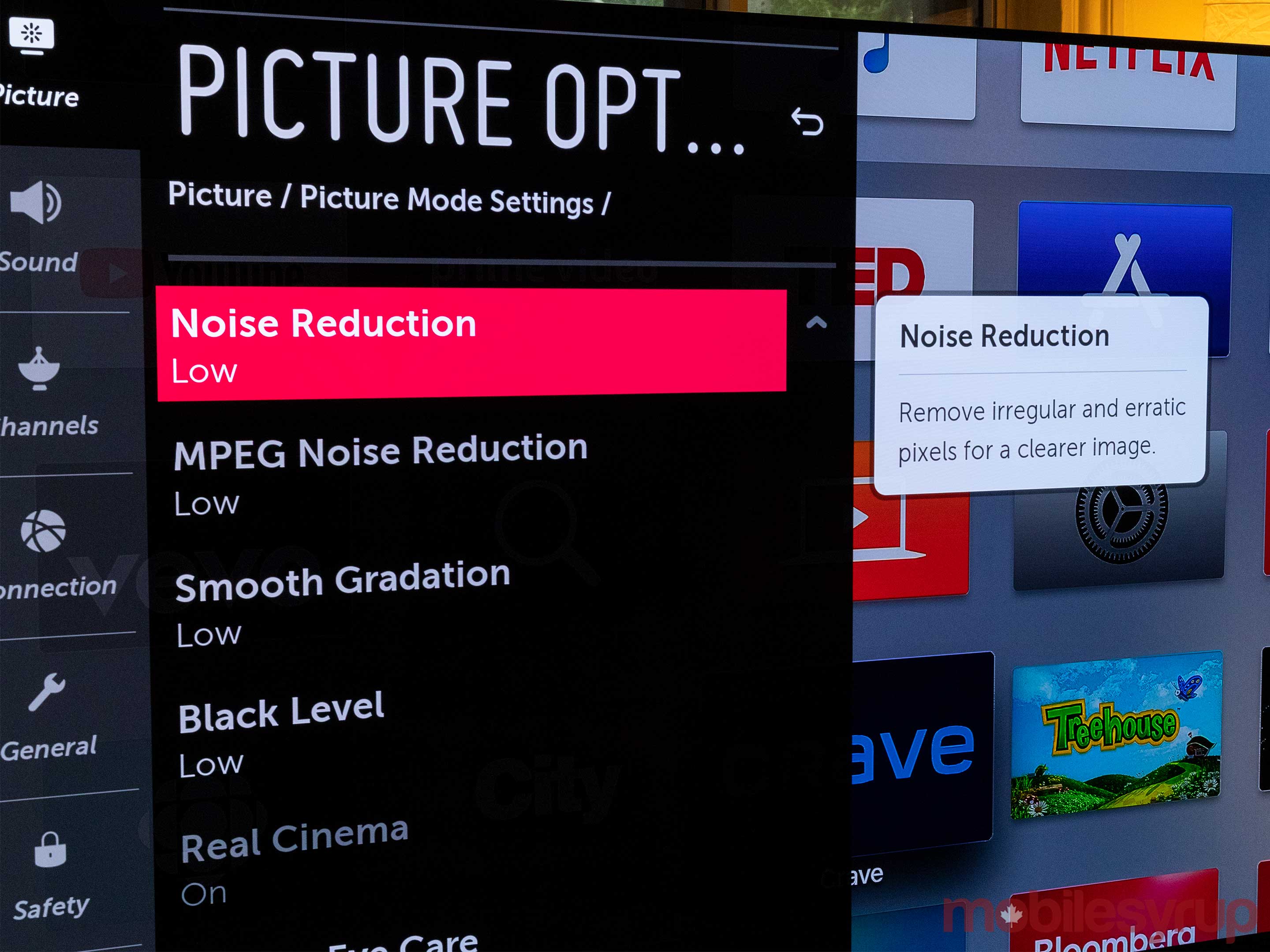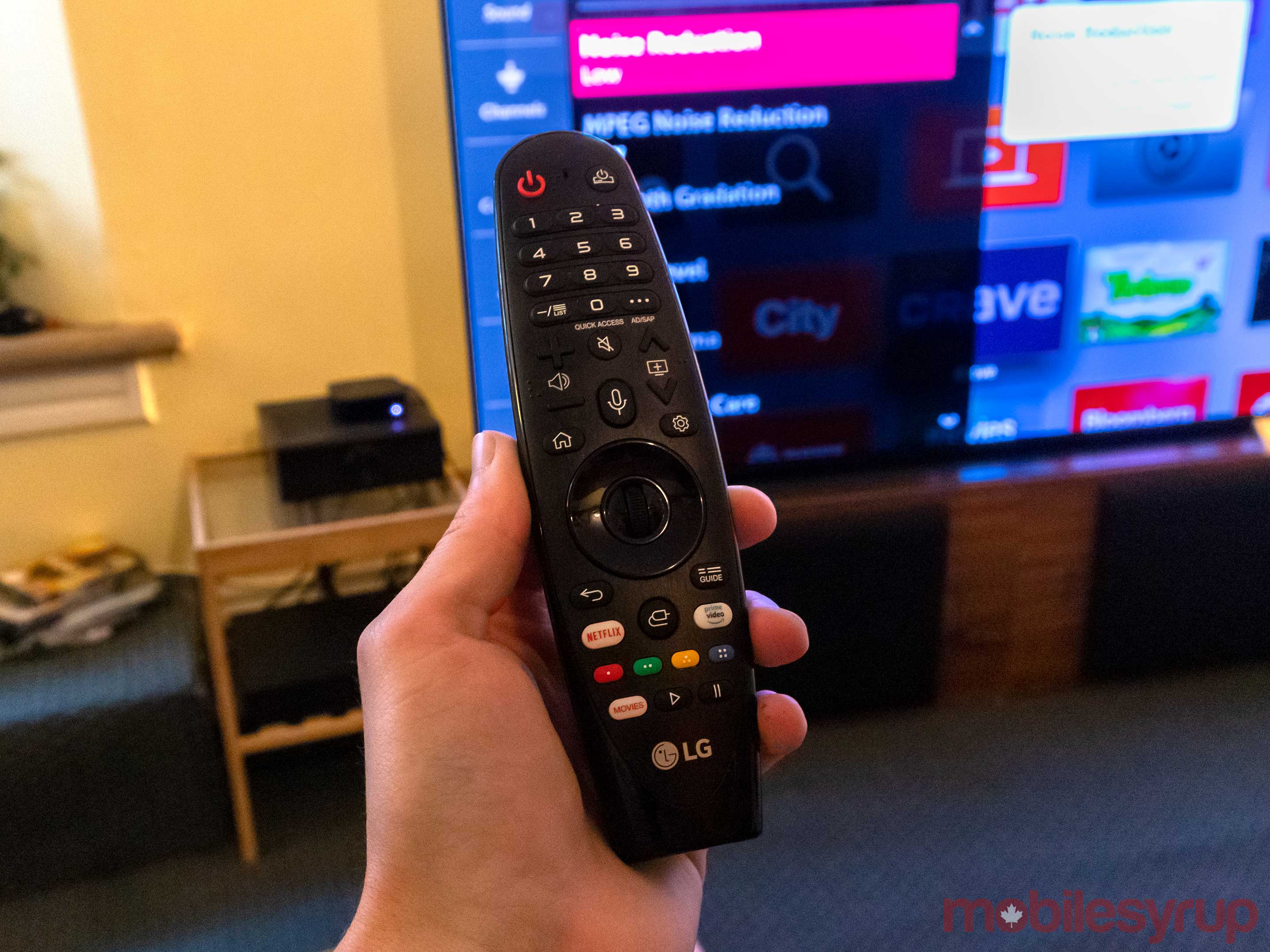
I recently spent a few weeks testing out a 65-inch LG C9 OLED TV, and guess what? It’s pretty fantastic.
It’s well known now that OLED TVs deliver excellent picture quality, and you can more or less expect a $3,800 TV to feature decent speakers, so I won’t dive too deeply into those aspects.
Instead, I’ll focus on the experience and the software side of things.
As OLEDs begin to creep down in price, it seems like a good time to start testing them out and to see how they really stack up against the LED TVs of today — hint, they’re still better — along with testing out their smart TV features and software experience.
Below are my thoughts on the LG C9.
Oh man, is it thin
The hardware is incredibly premium. My friends were repeatedly blown away by the sheer thinness of the set. While there is a thicker portion near the base of the television that houses components and speakers, the TV is about as thick as four stacked credit cards.
It’s also surprisingly stable and substantial considering how thin it is. Without the stand, it weighs in at 25.2kg (55.6lbs).
The lower half that houses the speakers and the inputs is plastic, but the panel above it features a nice looking brushed metal design. The stand is metal too, and it fits on my rather thin TV stand pretty well.
Another exciting aspect of the TV’s inputs is that all four of the HDMI ports are HDMI 2.1. This means that they support even higher resolutions and framerates than the TV is capable of. Each port also features eARC support. Because of this, all of these inputs can be used to turn the TV on and sync volume controls with a soundbar.
These ports can auto-detect devices as well, so when you hit the input button on your remote, the TV shows the device plugged into it and not the port number.
The display is where the real magic begins. The bezels are just under 1cm thick, and since they’re flush with the front of the screen like a smartphone’s borders, they fade away and are hardly noticeable.
Moving in from the bezels, you get that beautiful OLED screen. It features incredible colours and black levels. On top of this, it supports both HDR10 and Dolby Vision for super high-quality wide colour gamut picture. For everything else, like broadcast TV, for example, the C9 supports the HLG standard. The viewing angles are fantastic as well.
Beyond beautiful colours, the TV has no light bleed since it features an OLED panel. The first time I truly noticed this was when a little HDR notification popped up before content started playing. The small white square looked perfect with no light or colour bleed around it on the black background. This is a huge contrast to when my LED TV does this. On my TCL Series-6, there is a lot of light bleed around the notification.
The speakers LG packed in are also brilliant. My standard TV setup includes the Polk Command Bar. The C9 has Dolby Atmos support in its speakers, and it washed over me in ways the soundbar just doesn’t. In fact, I preferred using the C9’s built-in speakers when compared to the soundbar.
While I found that sometimes the television struggled to balance audio and background noise, it was more often clear and loud and the Atmos effect of sound falling around me was an enjoyable experience. I had no complaints when the TV played music either.
Software is where opinions might split
In terms of software, the C9 has some elegant tricks up its sleeve, but I’m worried most average users won’t think to set them up. On top of that, the interface is relatively easy to navigate, but I could see it being frustrating for some people since it isn’t the traditional grid that a lot of other TVs use.
Right away, the first thing you notice is LG’s remote. It’s not a horrible remote by any means. It’s pretty straight forward, other than the input button which LG labelled with an icon instead of a word, but that’s easy to overcome.
The more significant challenge is getting used to the pointer controls — think of the Wii remote, but more accurate. Overall, it’s excellent and works flawlessly, but I often found my self putting my feet up on the coffee table or shifting in my seat and just barely moving the remote and the pointer would show up on the screen.
This is one of the points of frustration that I was talking about earlier. You can use regular D-pad navigation buttons, but the pointer keeps coming up unless you disable it. You can do that by holding the ‘Back’ and ‘Home’ buttons at the same time.
The remote can also be programmed to be a universal remote.
The interface is LG’s WebOS, which is solid and features a unique looking design.
When you tap on the home button a small row of icons slides up from the bottom of the screen with your list of apps and some settings. It only takes up a few inches at the bottom so you can still watch the TV while navigating the menu tiles.
There are two ways to lay out the tiles. You can either have them automatically sorted based on what you use the most or you can organize them in a permanent order of your choosing.
There aren’t any big Canadian apps like Crave or CBC Gem, but staples like Netflix, YouTube and Spotify are all there.
In terms of LG’s default apps, there’s an app store, a file browser, a web browser, a search app and a Live TV app.
The Live TV app isn’t exactly live TV in the traditional sense, but rather it sources content from the web through a service called XUMO. This brings together content from places like CBC, GQ and Refinery 21 and you can navigate through them by using either the channel buttons on the remote or in a TV guide interface.
The TV also packs both Amazon’s Alexa and Google Assistant inside. That means you can talk to these two assistants through the remote’s microphone. Both of these assistants have a TV interface that displays what you ask it, and if you request things like the weather, then it will appear on the screen.
You can also use Alexa and Google Assistant-enabled devices to turn your TV on and off plus control things like volume and play/pause. It is worth noting that the Alexa Skill only works in the United States.
One thing I couldn’t get to work was getting either assistant to play music from Spotify. Alexa could play music, but only via Prime Music.
When you get into the nitty-gritty and start adjusting picture and sound settings, LG’s interface is pretty handy.
When you hover the cursor over each setting, a small blurb appears to tell you what the setting does and why you might want it on or off. This is one of the aspects of the interface that impressed me the most. Since people don’t know what each setting does, this makes adjusting things a lot easier.
There are a few smart settings that really show some of the unique features the TV is capable of. One of my favourites is called ‘One Touch Sound tuning.’ When you set this up, the TV sends sound signals to the remote, so it knows where you’re sitting. It then optimizes the speakers for your position in the room.
The TV also includes some AI picture and sound settings powered by its Alpha 9 (α9) Gen 2 intelligent processor, that senses what is happening in the room and adjusts itself accordingly.
The C9 does its best to recognize source content and then adjusts it to display as clearly and accurately as possible using AI. It’s not only taking the content into account, but also uses an ambient light sensor to adjust brightness, so the screen displays the picture perfectly in diverse lighting conditions.
These features are subtle but make for a perfect experience nearly every time. I’m one of the people that adjusts my TV’s brightness a lot and I didn’t have faith in LG’s AI going into this review, but it proved me wrong. When I was watching TV on the OLED I never reached for the remote and the picture quality and brightness were always perfect.
The sound AI was a similar experience, I once had eight to 10 people over watching a basketball game and I never had to reach for the remote. The TV always seemed fine and I could hear it through the noise.
One thing I will mention is that LG’s TV’s do have motion smoothing under the guise of TruMotion. I’d recommend turning this off because it looks horrible.
Another feature that is a little complicated but still welcome, is that you can set different picture and audio settings for each input. You can also set an overall setting for all inputs if you want.
Finally, I’d be remiss not to mention that AirPlay 2 is coming to the TV sometime this summer.
OLED > LED
Overall, I have no significant gripes with LG’s C9 OLED TV. It’s a beautiful set that adapts to the user’s needs no matter the atmosphere that they’re sitting in.
While I do wish the remote was a little less annoying sometimes, it makes up for it by making typing in passwords a bit easier than using a D-pad.
Across the board, this is a super premium TV that gets the job done and the worst part about it is that it’s made me hate my current LED TV thanks to its crisp, beautiful OLED panel.
MobileSyrup may earn a commission from purchases made via our links, which helps fund the journalism we provide free on our website. These links do not influence our editorial content. Support us here.

